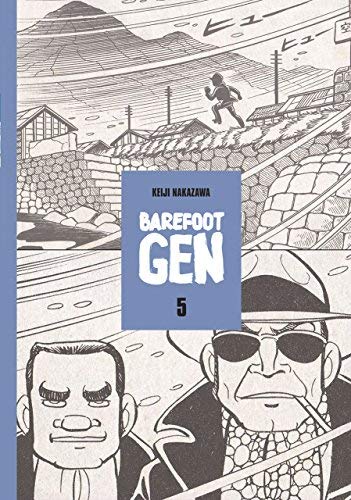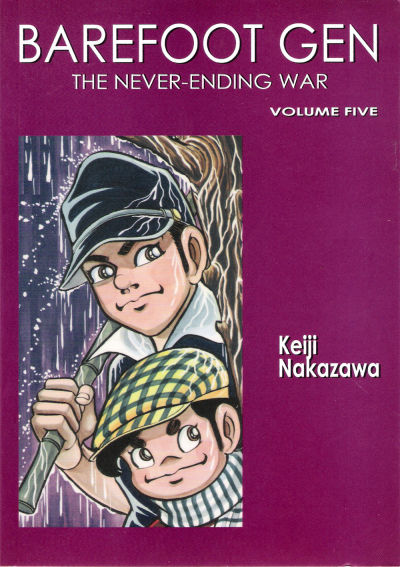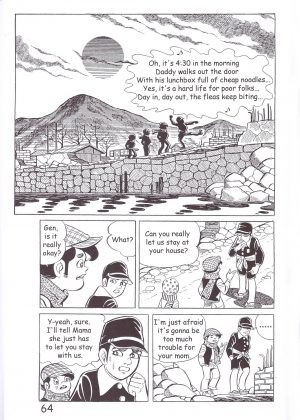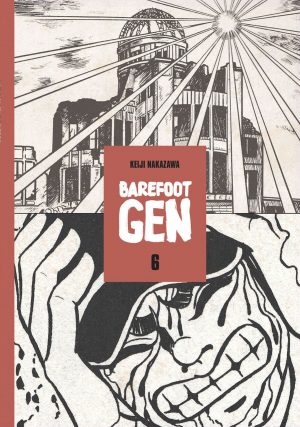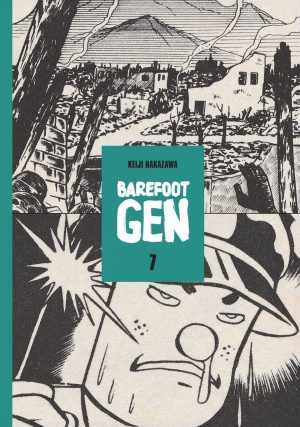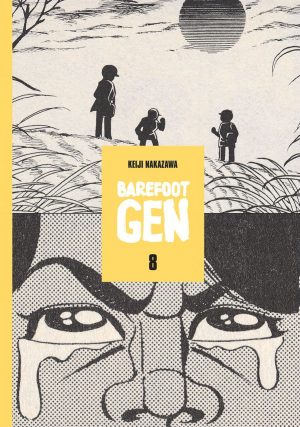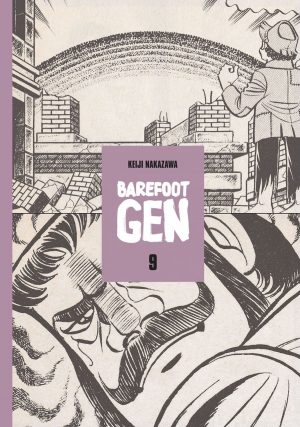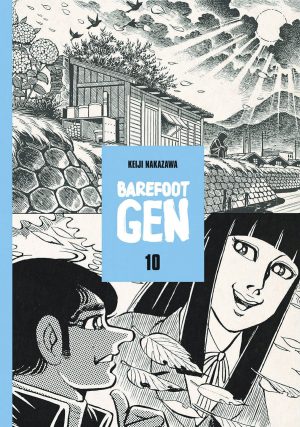Review by Ian Keogh
As The Never-Ending War opens it’s December 1947, over two years since an atomic bomb was dropped on Hiroshima, but via Gen’s school essay over the first fifteen pages Keiji Nakazawa reminds us of the event and how it impacted on Gen’s family. We’re also reintroduced to Ryuta, and what he’s been up to colours most of the book.
We saw him cross a line in Out of the Ashes, wanting to help, but drawn into circumstances beyond his control and real understanding. Now he and his buddies are associated with a major league gangster and have the cockiness that comes with it, but lack an understanding of the possible consequences. Nakazawa clarifies that soon after Ryuta is reintroduced. He also underlines the day to day difficulties remaining for families wanting to be fed, and how that might make the risks of the gangster life attractive.
There was a move toward telling a more structured story during Out of the Ashes, and The Never-Ending War follows the same pattern. Nakazawa’s introductions state that everything in series either happened to him or others from Hiroshima, but this reads more like a thrilling crime story involving children than a memoir. Events are crammed into a compact single month and while the gangster sequences are unpredictable, it’s with the smaller touches that this really comes alive. Gen remembers his father questioning the validity of war, yet despite Japan’s surrender those who see Japan in terms of destiny retain their beliefs. The sick and injured of Hiroshima are forced to line the streets and cheer when the Emperor visits, and school children are still being taught to venerate the ways of the empire. In the first volumes this militarism was personified by Samejima, the self-centred chairman of the neighbourhood association, now attempting to distance himself.
Because Gen himself has a broadly optimistic personality and because Nakazawa’s storytelling instincts ensure the tragedy is mixed with lighter moments, for much of the first half this is grand adventure. However, from halfway there’s a greater focus on Gen’s family, and when his mother becomes ill Nakazawa highlights the inhumane attitude of the American occupiers. They’re constantly testing and categorising the conditions of those who survived the atomic explosion, but block newspapers from reporting on the effects and the illnesses radiation has caused. Revelations about medical corruption are also explored, but throughout Nakazawa has shown how desperation forces people to do what would otherwise be unpalatable.
While not as overtly horrifying as the earliest volumes, The Never-Ending War lives up to its title, which is layered, referring to several aspects. Writing the Truth is prefaced in the final pages as we hear about the difficulties a novelist experiences when attempting to publish his story of recent events in Hiroshima.
